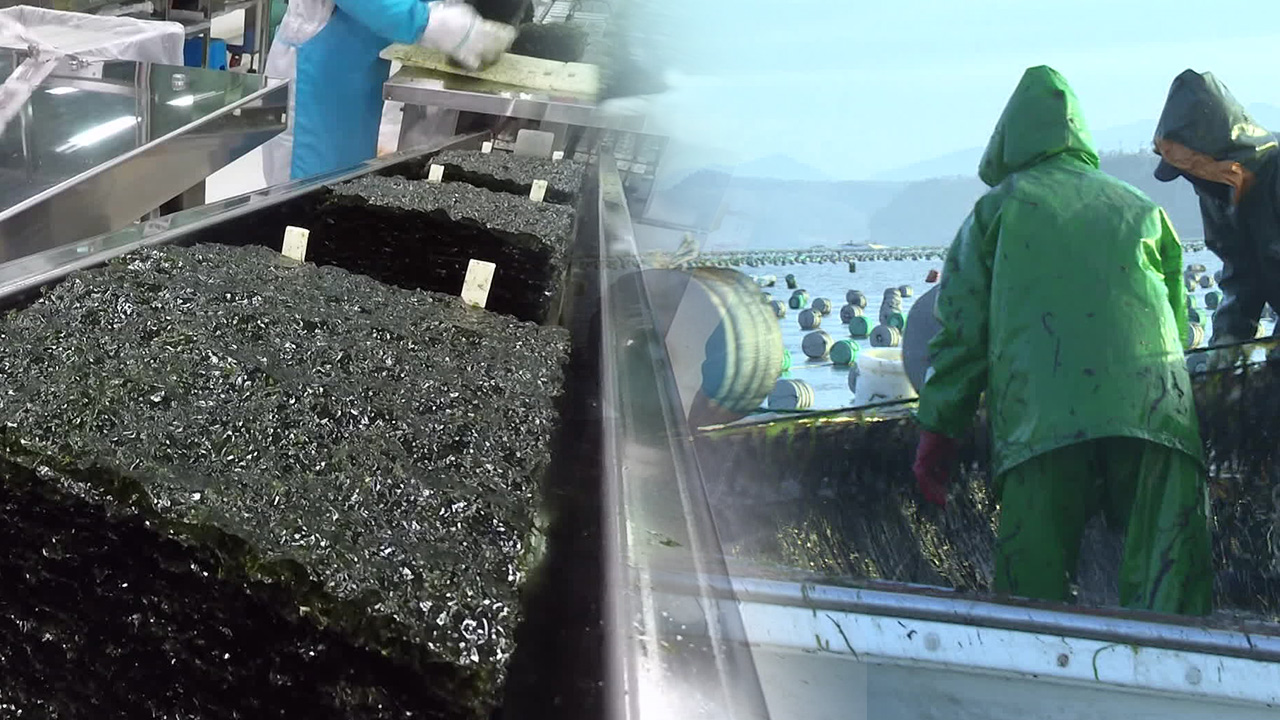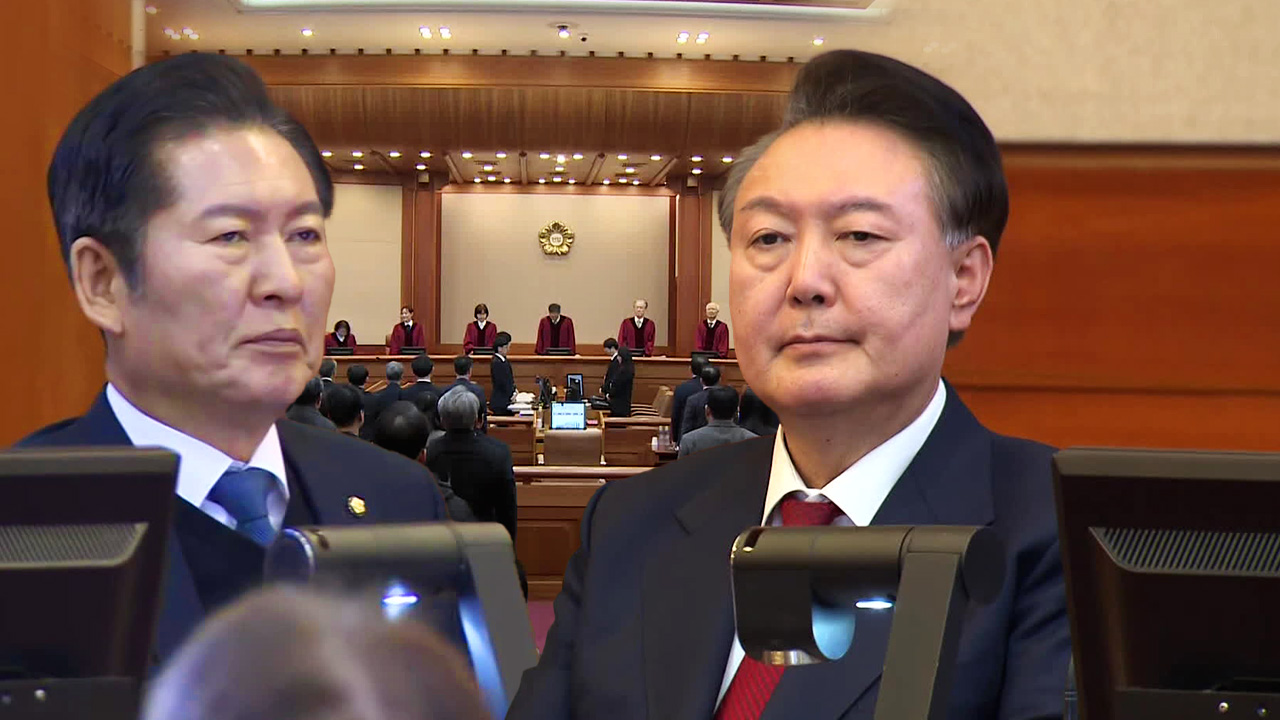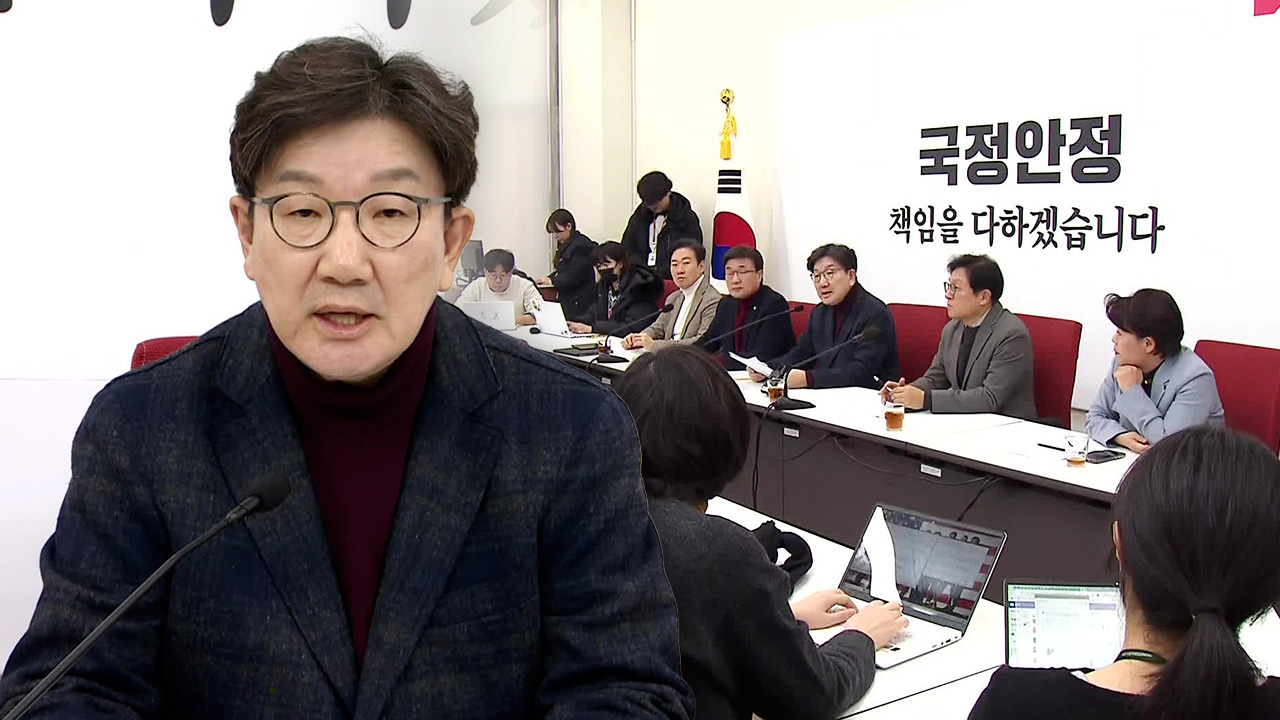[Anchor]
These days, the price of a sheet of dried seaweed exceeds 140 Korean won.
It is nearly 40% higher than the average level.
Gimbap restaurants say they have nothing left to spare.
However, the reality in the production areas is quite different.
Prices have plummeted.
Seaweed is piling up.
Not only is there excess, but 6,000 tons of wet seaweed were simply discarded.
What is going on?
Reporter Jo Eun-ae has the story.
[Report]
Lee Ji-yeon, who has been running a gimbap restaurant for 10 years.
She buys a box of seaweed from a wholesaler once a month, and while it cost 540,000 won two years ago, it has risen to 1.2 million won this year.
It has more than doubled.
[Lee Ji-yeon/Gimbap restaurant owner: "I'm at a point where I wonder whether I should continue (operating the store) or not because the price of seaweed has risen so much, and the cost of raw materials has also increased, leaving almost nothing left."]
However, in the production areas, 6,000 tons of wet seaweed were discarded just last month.
In Jeonnam and Chungnam Provinces, the water temperature has been suitable this year, leading to a sharp increase in seaweed production, but most processing companies are small-scale and unable to handle the increased volume.
Wet seaweed cannot be stored, so if it is not processed immediately, it must be discarded.
As a result, seaweed is piling up in the production areas, and the price of wet seaweed has dropped to less than half, while the retail price of dried seaweed has risen by over 40%.
[Cho Mun-seong/Jindo Fisheries Cooperatives Business Office Director: "Labor costs are rising, and we are currently unable to cover fuel costs or labor costs, so the fishermen are in a very difficult situation."]
Last year, as the price of seaweed soared and exports increased, the government approved new seaweed farming areas equivalent to 3,800 soccer fields.
The farming area has increased by about 4.2%, but the problem is that production volume predictions were not accurate.
[Choi Bong-hak/President of the Korea Seaweed Industry Association: "We need to accurately predict how much we will produce, and if we produce, we need to know the exact amount for exports plus domestic consumption."]
The government explained that there is a lag in the reflection of production area seaweed prices in consumer prices, and that prices will stabilize by the end of this month.
This is KBS News, Jo Eun-ae reporting.
These days, the price of a sheet of dried seaweed exceeds 140 Korean won.
It is nearly 40% higher than the average level.
Gimbap restaurants say they have nothing left to spare.
However, the reality in the production areas is quite different.
Prices have plummeted.
Seaweed is piling up.
Not only is there excess, but 6,000 tons of wet seaweed were simply discarded.
What is going on?
Reporter Jo Eun-ae has the story.
[Report]
Lee Ji-yeon, who has been running a gimbap restaurant for 10 years.
She buys a box of seaweed from a wholesaler once a month, and while it cost 540,000 won two years ago, it has risen to 1.2 million won this year.
It has more than doubled.
[Lee Ji-yeon/Gimbap restaurant owner: "I'm at a point where I wonder whether I should continue (operating the store) or not because the price of seaweed has risen so much, and the cost of raw materials has also increased, leaving almost nothing left."]
However, in the production areas, 6,000 tons of wet seaweed were discarded just last month.
In Jeonnam and Chungnam Provinces, the water temperature has been suitable this year, leading to a sharp increase in seaweed production, but most processing companies are small-scale and unable to handle the increased volume.
Wet seaweed cannot be stored, so if it is not processed immediately, it must be discarded.
As a result, seaweed is piling up in the production areas, and the price of wet seaweed has dropped to less than half, while the retail price of dried seaweed has risen by over 40%.
[Cho Mun-seong/Jindo Fisheries Cooperatives Business Office Director: "Labor costs are rising, and we are currently unable to cover fuel costs or labor costs, so the fishermen are in a very difficult situation."]
Last year, as the price of seaweed soared and exports increased, the government approved new seaweed farming areas equivalent to 3,800 soccer fields.
The farming area has increased by about 4.2%, but the problem is that production volume predictions were not accurate.
[Choi Bong-hak/President of the Korea Seaweed Industry Association: "We need to accurately predict how much we will produce, and if we produce, we need to know the exact amount for exports plus domestic consumption."]
The government explained that there is a lag in the reflection of production area seaweed prices in consumer prices, and that prices will stabilize by the end of this month.
This is KBS News, Jo Eun-ae reporting.
■ 제보하기
▷ 카카오톡 : 'KBS제보' 검색, 채널 추가
▷ 전화 : 02-781-1234, 4444
▷ 이메일 : kbs1234@kbs.co.kr
▷ 유튜브, 네이버, 카카오에서도 KBS뉴스를 구독해주세요!
- Wet, dried seaweed prices diverge
-
- 입력 2025-02-24 00:05:32

[Anchor]
These days, the price of a sheet of dried seaweed exceeds 140 Korean won.
It is nearly 40% higher than the average level.
Gimbap restaurants say they have nothing left to spare.
However, the reality in the production areas is quite different.
Prices have plummeted.
Seaweed is piling up.
Not only is there excess, but 6,000 tons of wet seaweed were simply discarded.
What is going on?
Reporter Jo Eun-ae has the story.
[Report]
Lee Ji-yeon, who has been running a gimbap restaurant for 10 years.
She buys a box of seaweed from a wholesaler once a month, and while it cost 540,000 won two years ago, it has risen to 1.2 million won this year.
It has more than doubled.
[Lee Ji-yeon/Gimbap restaurant owner: "I'm at a point where I wonder whether I should continue (operating the store) or not because the price of seaweed has risen so much, and the cost of raw materials has also increased, leaving almost nothing left."]
However, in the production areas, 6,000 tons of wet seaweed were discarded just last month.
In Jeonnam and Chungnam Provinces, the water temperature has been suitable this year, leading to a sharp increase in seaweed production, but most processing companies are small-scale and unable to handle the increased volume.
Wet seaweed cannot be stored, so if it is not processed immediately, it must be discarded.
As a result, seaweed is piling up in the production areas, and the price of wet seaweed has dropped to less than half, while the retail price of dried seaweed has risen by over 40%.
[Cho Mun-seong/Jindo Fisheries Cooperatives Business Office Director: "Labor costs are rising, and we are currently unable to cover fuel costs or labor costs, so the fishermen are in a very difficult situation."]
Last year, as the price of seaweed soared and exports increased, the government approved new seaweed farming areas equivalent to 3,800 soccer fields.
The farming area has increased by about 4.2%, but the problem is that production volume predictions were not accurate.
[Choi Bong-hak/President of the Korea Seaweed Industry Association: "We need to accurately predict how much we will produce, and if we produce, we need to know the exact amount for exports plus domestic consumption."]
The government explained that there is a lag in the reflection of production area seaweed prices in consumer prices, and that prices will stabilize by the end of this month.
This is KBS News, Jo Eun-ae reporting.
These days, the price of a sheet of dried seaweed exceeds 140 Korean won.
It is nearly 40% higher than the average level.
Gimbap restaurants say they have nothing left to spare.
However, the reality in the production areas is quite different.
Prices have plummeted.
Seaweed is piling up.
Not only is there excess, but 6,000 tons of wet seaweed were simply discarded.
What is going on?
Reporter Jo Eun-ae has the story.
[Report]
Lee Ji-yeon, who has been running a gimbap restaurant for 10 years.
She buys a box of seaweed from a wholesaler once a month, and while it cost 540,000 won two years ago, it has risen to 1.2 million won this year.
It has more than doubled.
[Lee Ji-yeon/Gimbap restaurant owner: "I'm at a point where I wonder whether I should continue (operating the store) or not because the price of seaweed has risen so much, and the cost of raw materials has also increased, leaving almost nothing left."]
However, in the production areas, 6,000 tons of wet seaweed were discarded just last month.
In Jeonnam and Chungnam Provinces, the water temperature has been suitable this year, leading to a sharp increase in seaweed production, but most processing companies are small-scale and unable to handle the increased volume.
Wet seaweed cannot be stored, so if it is not processed immediately, it must be discarded.
As a result, seaweed is piling up in the production areas, and the price of wet seaweed has dropped to less than half, while the retail price of dried seaweed has risen by over 40%.
[Cho Mun-seong/Jindo Fisheries Cooperatives Business Office Director: "Labor costs are rising, and we are currently unable to cover fuel costs or labor costs, so the fishermen are in a very difficult situation."]
Last year, as the price of seaweed soared and exports increased, the government approved new seaweed farming areas equivalent to 3,800 soccer fields.
The farming area has increased by about 4.2%, but the problem is that production volume predictions were not accurate.
[Choi Bong-hak/President of the Korea Seaweed Industry Association: "We need to accurately predict how much we will produce, and if we produce, we need to know the exact amount for exports plus domestic consumption."]
The government explained that there is a lag in the reflection of production area seaweed prices in consumer prices, and that prices will stabilize by the end of this month.
This is KBS News, Jo Eun-ae reporting.
이 기사가 좋으셨다면
-
좋아요
0
-
응원해요
0
-
후속 원해요
0
















이 기사에 대한 의견을 남겨주세요.